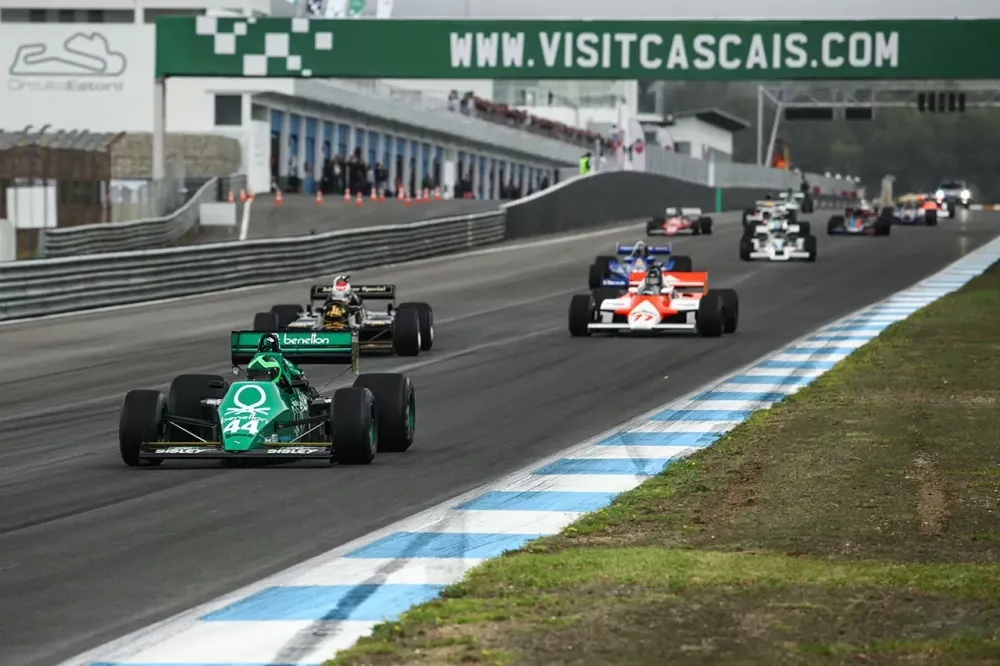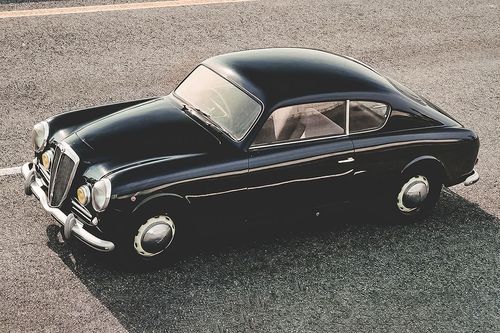Estoril and the noise. It was to be expected…
Photos: Gonçalo Reis Bispo and Rui Reis
The Estoril race track will have to stop holding unofficial races if it does not comply with the noise law. The court agreed with a group of residents who filed an injunction, claiming that the noise is “unbearable” for those who live and work around the circuit.
And now? What will happen at our Autodrome? What changes and what could happen and why?
WHAT IS HAPPENING IN ESTORIL?
We are all more or less aware of the number of competition events that take place on the historic circuit. Less well known is the busy schedule of testing sessions, corporate events, press presentations and private track days that take place throughout the week.
The growing intensity of this agenda is a more recent reality, resulting from an increasingly effective promotion of the circuit across borders and, above all, a growing popularity in the country, but not only…
IS EVERYTHING WORTH IN PORTUGAL?
It is a known fact among enthusiasts, companies and teams across Europe that the circuits in Portugal are one of the few where there is no noise control.
Motorbest itself has already received requests from foreign groups of collectors with whom it maintains contact, requesting help in organizing private events with historic competition cars, in Estoril and Portimão, with a single condition: there are no noise limits.
Despite the cost of moving cars to southern Europe, owners prefer it, not only because they want to avoid emasculating performance with mufflers, but because they want to hear the engine in all its glory.
WHAT IS IT LIKE OUTSIDE?
Especially in the United Kingdom, where more track days are held than in probably any other European country, noise standards are well known and carefully controlled by the circuits, who do not want to lose their licenses.
The most common limit is 105dB, and in some circuits it is much lower, such as Castle Combe with 100dB and Thruxton with 98dB. These values are for a measurement made with the vehicle static at ¾ of the rotation limit. In some cases, there are measurement points for the vehicle moving along the route, from which the average noise over 30 minutes is measured, compared with an established limit.
The limit of each circuit varies depending on the surrounding housing density but, above all, depending on values negotiated between the entity that owns the circuit and the residents' representatives, which may or may not be the local authority.
PERMITTED EXCEPTIONS
Using Donington's example, we can analyze the existing exceptions, which allow events to be held under special conditions.
On this circuit, which is located in Derby, right in the center of England and a few kilometers north of Leicester, 60 days of racing are allowed per year, always between 9 am and 8 pm, divided as follows:
– 20 days without noise limit
– 20 days with a limit of 118dB
– 20 days with a limit of 108dB
Two days of testing are also allowed per week (weekends or holidays are excluded) from 9 am to 5 pm, or until dusk, whichever comes first.
Throughout the 365 days of the year, the use of the runway is permitted at a limit of 98dB, measured in movement. There are rare models approved for road use that may exceed this limit, namely some supercars or specific models from high-performance sports car manufacturers such as Caterham, among others.
Thus, unmodified cars will easily comply with limits of around 100dB and even several of the cars currently used in national competitions can be used without exceeding what the laws require.
WHAT DO RESIDENTS OF THE ESTORIL AREA DEMAND?
According to the president of the association Moradores Baixo Ruído, what is at stake is not the fact of exceeding the limits defined by law, but rather the frequency with which this happens. Leonor Machado admitted in statements to Expresso that “The race track is a place to make noise, no one has any doubts about that”, adding: “but there are levels and levels of noise and these have to be respected. If we exceed these levels we cannot constantly exceed them.”
“I miss Formula 1”, ABR spokesperson Leonor Machado admitted to Lusa, assuring that “the official races are not as bothersome” as other private events, which “have worsened the noise level” in the area. “The ACP [Automóvel Clube de Portugal] has been carrying out tests here, which do not cause much noise, and are important for commerce and tourism”, said the resident, as an example, adding that the problem lies in events with cars without limitation of capacity. noise “all day long”.
In addition to noise measurement control, residents demand the installation of acoustic barriers, something common at the limits of circuits.
WHO ARRIVED FIRST?
The Estoril Race Track was inaugurated in 1972. The initiative was by Fernanda Pires da Silva, founder and president of Grupo Grão Pará, who built the infrastructure with her own capital.
The land, which until now was a quarry, was purchased from the famous businessman Tomé Feteira and had the advantage of having good access and being isolated, with practically no housing or services in the immediate vicinity.
For years, apart from its proximity to the sea, the Autódromo was the only factor in attracting tourists and investment in the Alcabideche area. Over time, the expansion of Lisbon and the increase in population led to increasing urban pressure in the region.
Thus, the majority of inhabitants who are showing outrage today arrived well after the circuit's inauguration and even after it had reached its peak of international popularity, in the early 1980s, when it began to host the F1 World Cup.
Even the State and local authorities chose to pretend that the circuit did not exist, locating daycare centers and senior centers next to it. The only reason a hospital was not built on the curve of the tank is because health is far from being a national priority.
IS IT JUST THE RESIDENTS MOVING AROUND?
It is a poorly kept secret that real estate developers are interested in land on the historic circuit. In fact, this was the motivation of the Cascais City Council, when it attempted to acquire the structure and company CE – Circuito do Estoril, S.A. from Parpública.
In addition to a plan to energize and rejuvenate the Circuit, the municipality intended to protect this tourist and economic asset from real estate interests.
The Autarchy's intention was only to acquire the land and structure, but the State imposed the purchase of the company and its assets, as a way of avoiding the costs of dissolving it.
After establishing the business conditions, the Court of Auditors made the purchase unfeasible. The ruling states that the infrastructure, owned by the public capital holding company Parpública, “carries out activities for exclusively commercial purposes” and that the purchase by the city council will not have “safeguarded the interests of the population” of the municipality. The municipality has not given up on finding a solution, but without this, the vulnerability of the circuit remains real.
Private interests will be more than many, with powerful groups in search of an opportunity, to which will be joined an allegedly spontaneous social movement, motivated by an ecological fever that materializes in an attack on the automobile. This movement would certainly welcome the definitive closure of the Autódromo.
Speculating a little, it is not unrelated to all this that the Moradores Baixo Ruído association is represented by one of the most renowned lawyers in the country, Ricardo Sá Fernandes.
ESTORIL AUTÓDROMO, A HERITAGE AND AN ASSET.
Portugal currently has only two permanent circuits dedicated to motorsport (in addition to being practically inactive, Vasco Sameiro is one step away from extinction, and is also hostage to interests and struggles that neither dignify nor defend motorsport). Benefiting from all of Portugal's attractive factors, such as the climate, the Estoril and Portimão circuits are almost constantly occupied.
Brands repeatedly choose our country, especially in winter, for their international presentations, but also for development tests, which involves moving huge teams of qualified professionals and battalions of journalists to Portugal.
To this we must add the historical significance of a structure that transformed and catapulted motor sport in Portugal and which was the scene of fundamental moments in the world history of motorsport, such as Ayrton Senna's first victory, in 1985.
AND NOW?
Parpública informed the press that it would evaluate the ruling before making a decision. For now, it is to be hoped that the provisions of the law will be complied with, measuring noise and installing the aforementioned acoustic barriers.
After that, it is to be hoped that our beloved Autodrome will be safe for a while, but it is not to be believed that everything will stop here.
If the Estoril Circuit were a private company, perhaps we could be more relaxed, believing that it would do everything it could to tenaciously defend its interests. But when such an entity is owned by the State and considering the way in which public bodies have behaved over the last few years, shamelessly serving the interests of groups close to political power, the only thing we can be sure of is that danger lurks. .
It is therefore necessary to be vocal in defending the interests of motorsport and the Autodrome. Know how to highlight, with valid arguments, in each conversation, in each post on social media, what is at stake. Using serious, reasonable, well-supported arguments (and illustrated with the right images…) to understand what is at stake and the hypocrisy underlying the chronology of events.
It is the mission of every enthusiast to defend the social, cultural and economic value, direct and indirect, that depends on the existence of this beautiful route, close to our capital. Especially if we consider that, in Portugal's current economic and political context, it is highly unlikely that another circuit of international size and importance will be built again.









